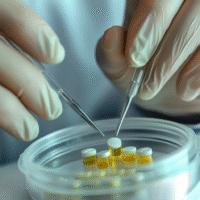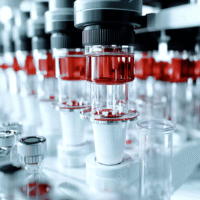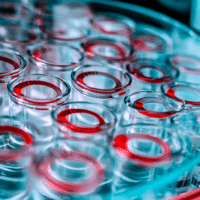Understanding the Trial Results
What Worked?
The trial showed that endolysin gel significantly improved symptoms of atopic dermatitis (AD), a common skin condition that causes itching, redness, and dryness. Participants using the gel had less severe skin lesions and lower levels of Staphylococcus aureus (a type of bacteria often found in skin infections). The gel was safe and well-tolerated, meaning patients did not experience significant side effects.
What Didn’t Work?
While the gel showed promise, it is important to note that the study focused on a small group of 20 adults. More research may be needed to confirm these results in larger populations and different age groups.
How This Helps Patients and Clinics
For patients, the endolysin gel offers a new treatment option that is both effective and safe for managing mild-to-moderate AD. Clinics can now consider this gel as part of their treatment plans for patients struggling with this condition.
Real-World Opportunities
- Doctors can incorporate endolysin gel into treatment plans for patients with AD.
- Hospitals can offer patient education on this new treatment option.
- Clinics can monitor patient responses to the gel and share outcomes to improve overall care.
Measurable Outcomes
Clinics should track the following after using endolysin gel:
- Changes in skin lesion severity scores.
- Reduction in itching and discomfort levels.
- Frequency of bacterial infections in affected areas.
- Patient feedback on overall skin health and quality of life.
AI Tools
Clinics might consider using AI tools that help track patient outcomes and manage treatment plans. These tools can analyze data to provide insights on the effectiveness of the endolysin gel in real-time.
Step-by-Step Plan to Apply Findings
- Start by introducing endolysin gel to a small group of patients with mild-to-moderate AD.
- Educate staff and patients about the benefits and usage of the gel.
- Monitor patients closely for improvements and any side effects.
- Gather feedback and data on treatment outcomes.
- Gradually expand the use of the gel based on positive results and patient experiences.
For more details on the research, you can visit the full study here.



























